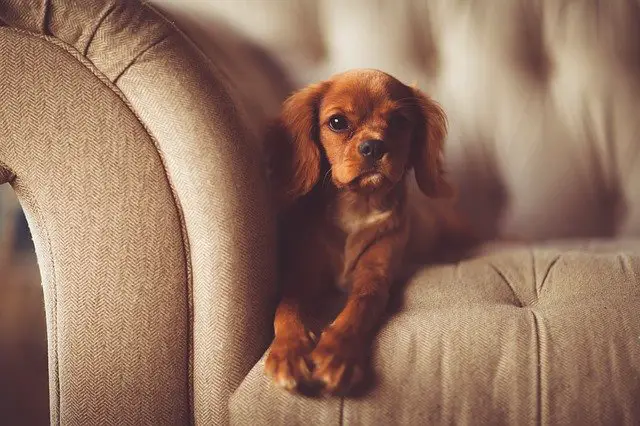Are dogs scared of the dark?
I wasn’t sure of the answer to this question. You see, I have a dog that is scared of her own shadow. Gentle soul that she is, she is afraid of the slightest of noises. This July, she was scared of fireworks too and hid all day under the bed.
That is why I wasn’t sure whether all dogs are scared of the dark. So I decided to do some research on the topic and wish to share all that I have learnt with you all.
Here is the answer to ‘are dogs scared of the dark?’
Are Dogs Scared of the Dark?
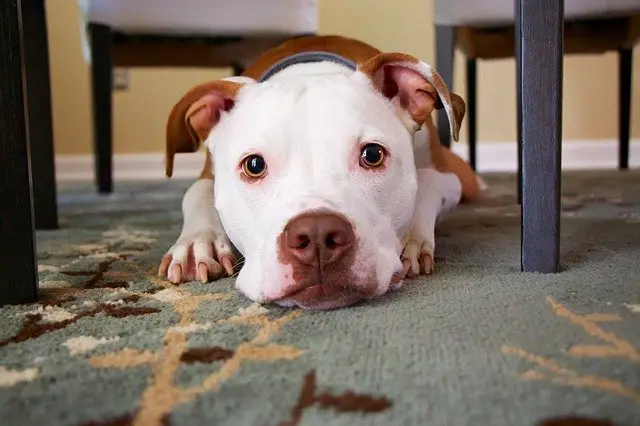
Yes, it is possible that our beloved dogs are scared of the dark.
This is not applicable to all dogs though. Guard dogs and watch dogs are usually not afraid of the dark since they were bred specifically to live outdoors and guard farms and properties.
Even a hard-working farm dog may not be afraid of the dark as it is given the responsibility of guarding livestock.
The same is the case with hunting dog breeds. Hunting dogs often have to run in pitch dark forests and trap and tree their prey. Naturally, you won’t find these dog breeds shivering in the dark. (However, hunting dogs are afraid of loud noises – as you will find out later in this guide!)
Some companion dog breeds and lap dogs like Chihuahuas and pug are known to be afraid of everything and anything. Most small pet dog breeds are usually afraid of the dark as they tend to be aware of their small sizes and look up to their humans for protection.
So yes, the answer to the question ‘are dogs scared of the dark’ is yes – dogs could be afraid of the dark as surprising as that may sound to us humans. After all, they rely upon their eyesight and the low light/dark conditions could make them a little anxious about not being able to see things properly.
Why Are Dogs Scared of the Dark?
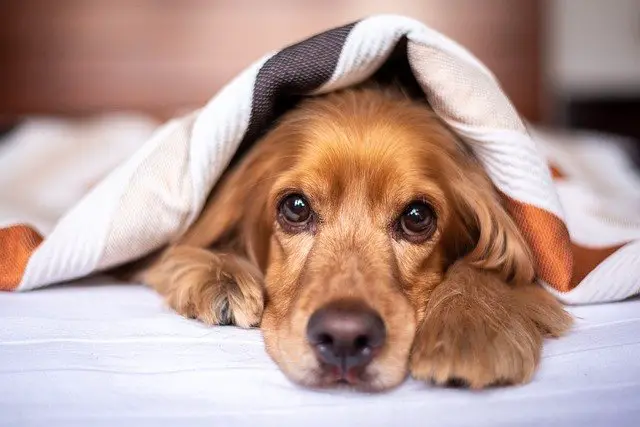
Here are some reasons why dogs could be scared of low-light conditions of dark areas:
1. Dogs cannot see in pitch dark
Dogs have better night vision than humans. This is mainly due to the higher number of photoreceptors (rods) as well as a special structure in dog’s eye – called tapetum – that enable them to see a lot better than humans can in low-light conditions. (It is also why their eyes shine in the dark and in photos).
Having said that; dogs still cannot see very clearly under pitch dark conditions. Your pet could see clearly in a night light, or in the light of the moon and stars. But in absolute pitch –dark, it might still not be able to do so.
Dogs rely fully on their sense of sight, hearing, and smell to stay safe and that could cause some anxiety for certain dogs when there is no light.
2. Past trauma
Dogs also retain memories and traumatic experiences. If a dog has had a traumatic experience in the dark, it could develop a phobia of darkness. Fireworks, for example, usually take place after dark. Dogs that are scared of loud noises could fear the dark for this reason. Just one incident of loud noise at night could also be a trigger for a dog to feel afraid of night.
3. Instinctual behavior
In the wild, dogs and their ancestors – wolves – usually encounter predators after the dark. Even strong animals like wolves are more vulnerable after sunset to predators like snakes. Domesticated dogs might have retained these instincts and that is why they are afraid or scared of dark and dim conditions.
4. Limited senses in older dogs
Elderly or senior dog might lose their sense of hearing and sight as they age. This too could result in an anxious dog since they can no longer see well in low light. Older dogs even bump into things causing injuries, pain, and trauma.
5. Separation anxiety
Often, dogs that show signs and symptoms of being scared of the dark also suffer from separation anxiety disorder. If you happen to leave your pet alone at home in the evening, and the pet has gotten destructive, you may have even rebuked or shouted at it. This could further exacerbate a dog’s fear of the dark.
6. Genetics
Certain fears and phobias in dogs are inherited. If the parent dog is afraid of thunderstorms or fireworks, chances are that the offspring puppy could also be afraid of them.
Some hunting and herding breeds that are highly attuned to their environments are also known to suffer from phobias of loud noises/sounds.
What Are the Signs that a Dog is Scared of the Dark?
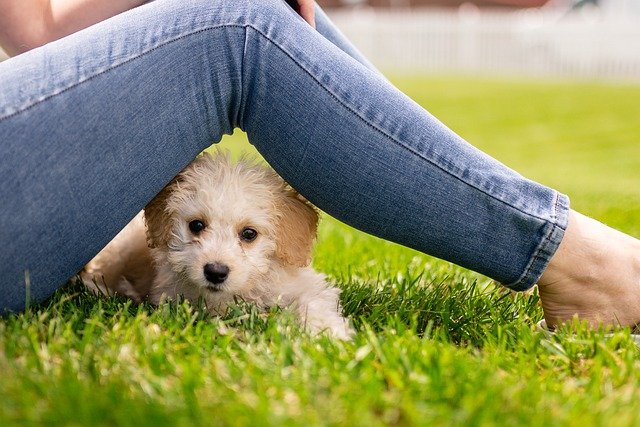
Your dog might get very anxious at the prospect of walking in a dark alley, or going into a pitch-dark room. It might show the following signs and symptoms during the fear periods:
- Yawning
- Cowering
- Refusing to walk; backwards walking, pulling on the leash
- Drooling/salivating
- Pacing restlessly, unable to settle.
- Barking, whining, howling
- Becoming clingy, following pet parent everywhere.
- Restlessness
- Being distracted
- Licking excessively
- Lack of appetite.
- Tail tucked between the legs.
- Attempting to hide
What are Other Fears and Phobias in Dogs?
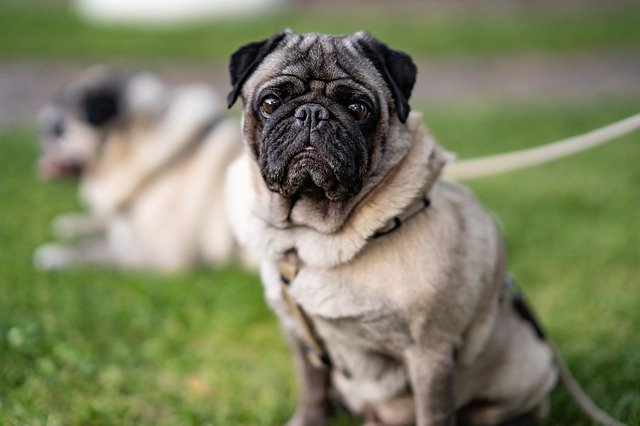
There are four types of fears or phobias seen in canines:
1. Fear of loud sounds/noises
Many dogs are afraid of fireworks, thunderstorms, and other loud noises. Often, this phobia is inherited. It is common in herding dogs that are very sensitive to their surroundings.
2. Fear of vets/groomers
This fear is seen in dogs that are afraid of pain. Many dogs might be afraid of blood/injection and some even are afraid of grooming. Often, these dogs are not used to or desensitized to the vet/groomer and resultantly might suffer from fearful behavior during visits to these professionals.
3. Fear of strangers
My dog stares at people that ‘look’ or dress differently – a person who wear strange clothes, hats, or bulky attire. She stares at them and then puts her tail in between her legs or runs away and hides. Dogs that are rescued from shelters are also known to develop this fear especially if they have been abused by strangers.
4. Situational phobias
A dog might develop separation anxiety which could turn to a phobia if it has a negative experience when left alone at home. Such dogs develop trust issues. They also display destructive behaviors like tearing linen, chewing furniture, urinating indoors etc. when they are left alone for prolonged periods.
Some dogs are terrified of going up and down the stairs. This is especially seen in young puppy. However, some older dogs can also display the fear of staircases after traumatic event like falling down.
Another situational phobia is the fear of car rides. Your dog might have a negative experience that a car ride ends up at the vet’s clinic or the groomers.
5. Fear of other dogs
A dog can also have phobia of other dogs. For example, a small dog could be afraid of larger dogs at the Dog Park.
How to Help a Dog with Fears or Phobias?
To an extent, fear is necessary as it can help keep a dog alive. Even in the wild, dogs (and their ancestors – wolves) rely upon fear for survival. However, fear can get out of hand and could cause a dog to become dangerous to others in the family.
Fears in dogs can also turn into full-blown phobias. A phobia is accompanied by symptoms like aggression, barking, shaking, hiding, biting, etc.
That is why it becomes necessary to train a dog and desensitize it to those fears. Here are some ways to deal with a fearful dog:
1. Seek help right away
It can be highly frustrating for dog owners to live with a fearful dog. This is especially true when the scared dog displays destructive behavior like barking, urinating indoors, etc. You must be patient and work with a canine behaviorist to guide the dog into behavior modification.
The key is to start as soon as you see signs of excessive fear in your dog. Phobias and fears can worsen with time. So please speak to a certified canine veterinarian behaviorist as soon as possible.
2. Behavior modification
Almost all canine behaviorists recommend medication, calming aid with behavior modification training for dogs with extreme fears.
You must desensitize your pet to the object of its fear (in this case-dark), and use positive reinforcement to change its response to the fearful situation.
3. Change your response to your dog’s fear
In addition to training the dog, it is vital to train yourself. You might have unknowingly encouraged your dog’s fear of the dark by saying ‘good boy’ or ‘it’s OK’. This might make your pet think that it is alright to be fearful.
So change the way you respond next time your dog shows signs of being scared of the dark. Simply place your hand on your dog (do not pat it) and maintain constant pressure on your pet’s body.
4. Use Thundershirts®
Many pets with anxieties and fears are known to feel calmer when they wear Thundershirts. This anxiety-vest tightly hugs your pet and makes it feel safe and calm. Many pet parents report fewer licking, barking, and other signs of fear in their pets during vet visits, for thunder phobia, fireworks, car drives, etc.
5. Plan ahead
You can also plan ahead to prevent fear triggers in your dog. This includes closing doors and windows during fireworks and thunderstorms, checking the weather in advance, leaving a night light on for your dog, and also planning your dog’s walks during the time when other dogs won’t be present.
Should You Leave a Light on For your Dog?
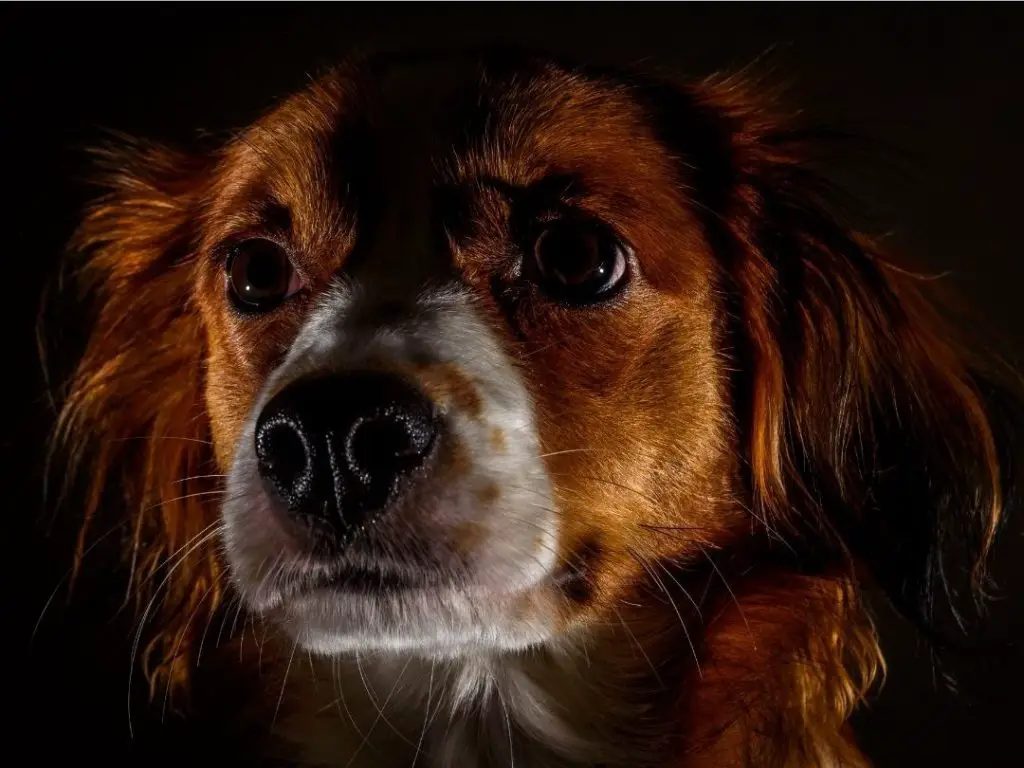
Yes. If you have a fearful dog with nighttime anxiety, you could leave a light on for it to sleep.
Dogs are definitely better at seeing in the dark than humans. However, not even dogs can see in pitch darkness. Therefore, leaving a small night light on can help your dog navigate easily in case it wakes up.
For elderly dogs with poor vision, leaving a night light can aid in better night vision.
Are Dogs Afraid of Certain Colors?
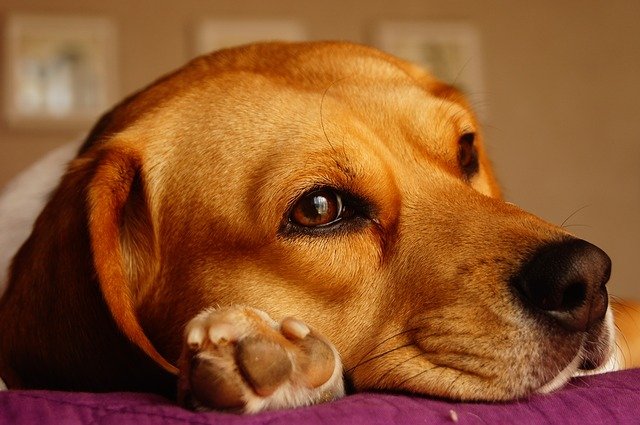
Many people wonder if dogs prefer certain colors and are afraid of others.
Some people specifically wonder if dogs are afraid of the red color. There is a school of thought that dogs could be afraid of red.
In fact, in some countries, housing societies use red water sprays to deter stray dogs from entering their premises. In reality, dogs cannot decipher red color as they can only see yellow, gray, and blue colors.
Naturally one could say that dogs do have favorite colors-yellow and blue. After all, these are the only colors they can decipher.
FAQs on Are Dogs Scared of The Dark?
1. What scares a dog the most?
Dogs are typically afraid of loud noise like thunderstorms and fireworks. Some dogs are afraid of other dogs, staircases, car rides, the dark, and even vets.
2. Can dogs smell fear?
Yes. A dog’s olfactory sense is 10,000 to 100,000 times greater than that of humans. That’s why, they can smell sweat, fear, and stress in a human. You cannot hide the fact that you are afraid of a dog!
3. Are dogs scared of heights?
Yes. A dog does have an awareness of height. Resultantly, it could develop a phobia of heights if it has fallen from the height in the past. You can limit your dog’s fear of heights by limiting its exposure to heights or desensitizing it in gradual steps.
Conclusion
Are dogs scared of the dark?
Yes, a dog could develop a fear of the dark if it has had a negative experience with it. Limited sense of sights in elderly dogs can trigger phobia of the darkness in a dog. Some dogs are afraid of the dark if they have separation anxiety and are left alone at night.
